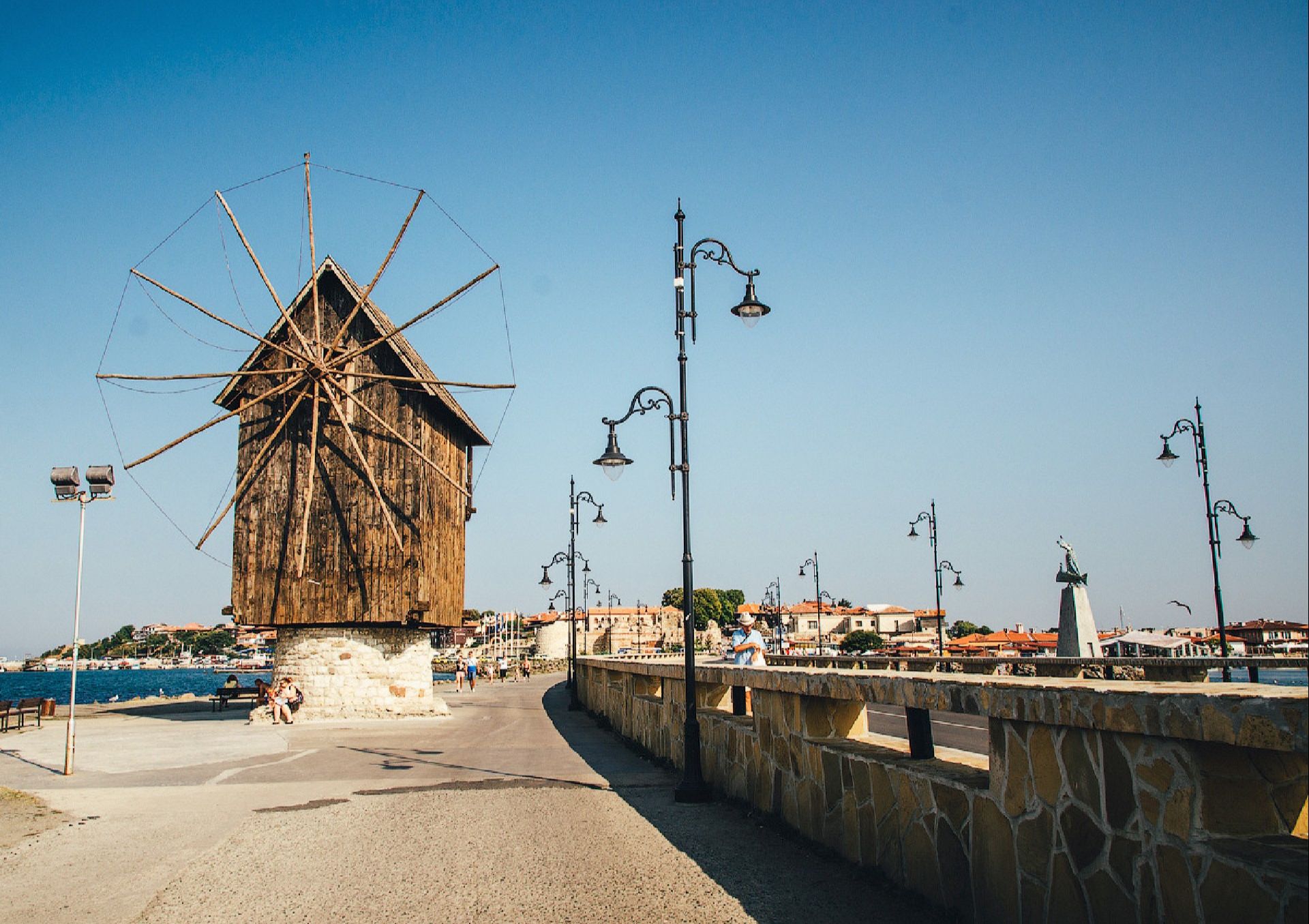All content and media files are published under a Creative Commons Attribution-ShareAlike 4.0 International License (CC BY-SA 4.0)
Once upon a time, a beautiful city, which is now called Nessebar, was founded on the wonderful shore of the warm Black Sea on the territory of the ancient Thracian kingdom. Since then, only the ruins of Roman fortifications and Byzantine-era churches with original frescoes from the Late Middle Ages have remained of the ancient city. It is unknown when the main tourist attraction of Nessebar, the famous windmill, appeared. However, this does not prevent it from decorating all tourist postcards with its beautiful view and attracting no fewer tourists to its lands than its world-famous neighbor, the Golden Sands.
It is only known that the ruins of an ancient stone church, destroyed in the 4th century, served as a foundation for the ancient windmill. The date of the wooden structure's creation could not be established. However, its almost blackened planks indicate that it had a long happy life. The old wooden mill is a three-story building. The first floor was used for storing grain and bags of finished flour, the second floor served as a home to the miller and his family, and the third floor was occupied by various millstones, shafts, and other tools. Most of the miller's work was done by the wind blowing from the Black Sea. It activated the mechanism, and the miller only had to watch the grinding carefully.
In the distant past, Nessebar housed lots of similar windmills, but only two of them have survived to this day. One stands among modern buildings, and the other has become a symbol of the city and adorns the entrance to the historic center of Nessebar. The azure sky, the amber sun, and the Black Sea horizon make the old mill particularly fabulous. Besides, it stands just a short walk from other outstanding attractions of the Nessebar Old City. The fortress walls of the Old City hide many treasures, ranging from old churches and temples to ancient artifacts of the archaeological museum.
